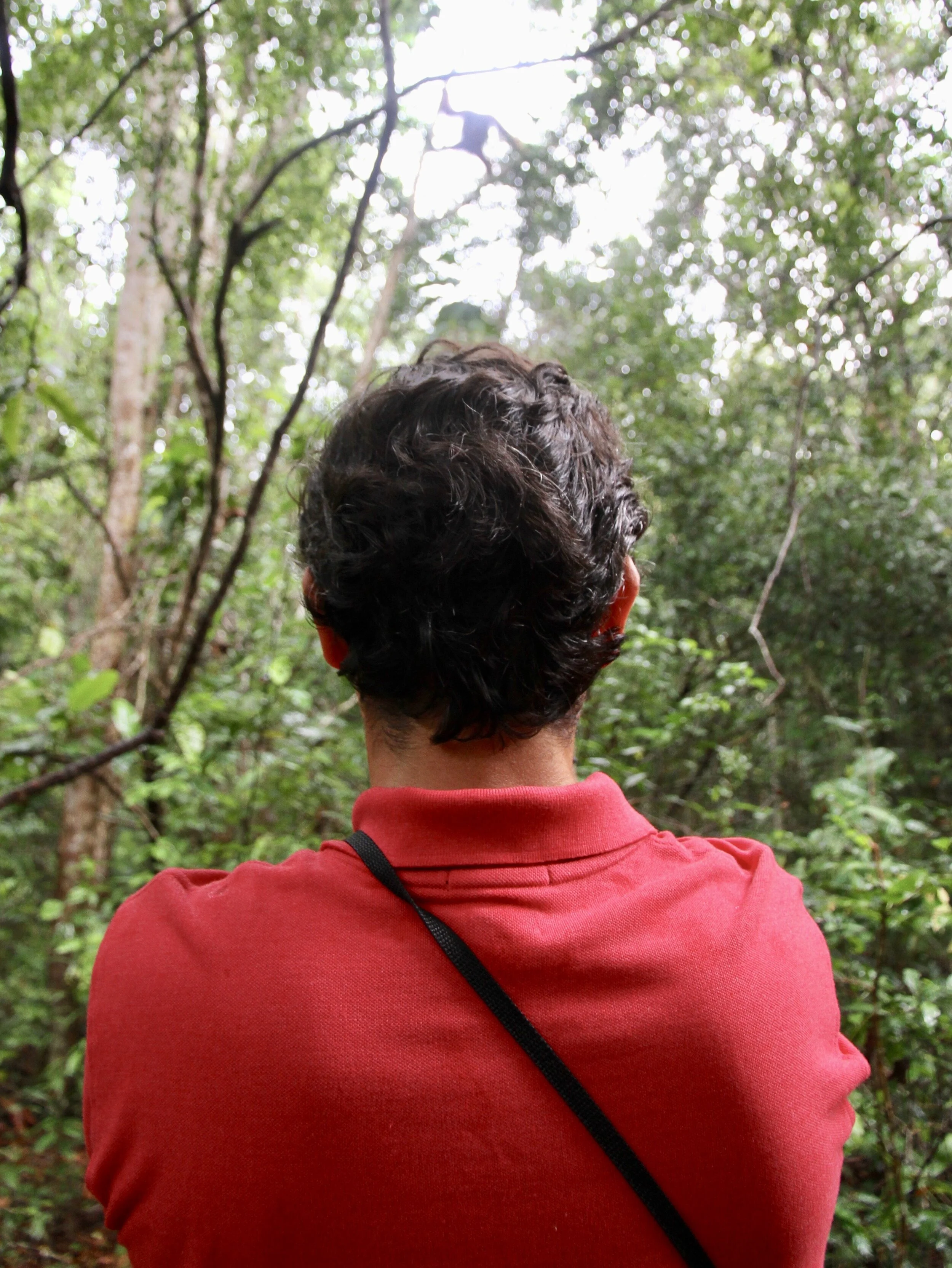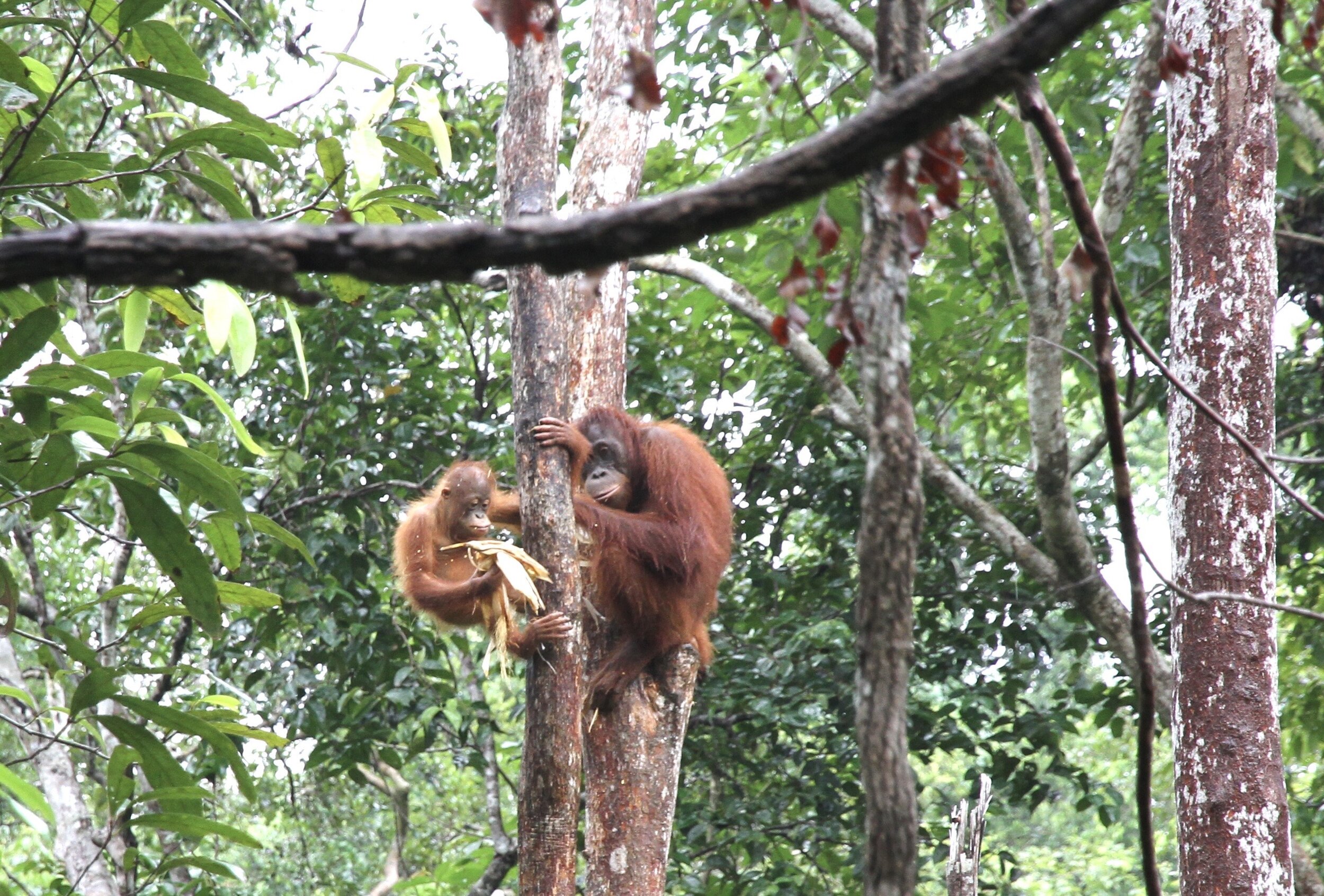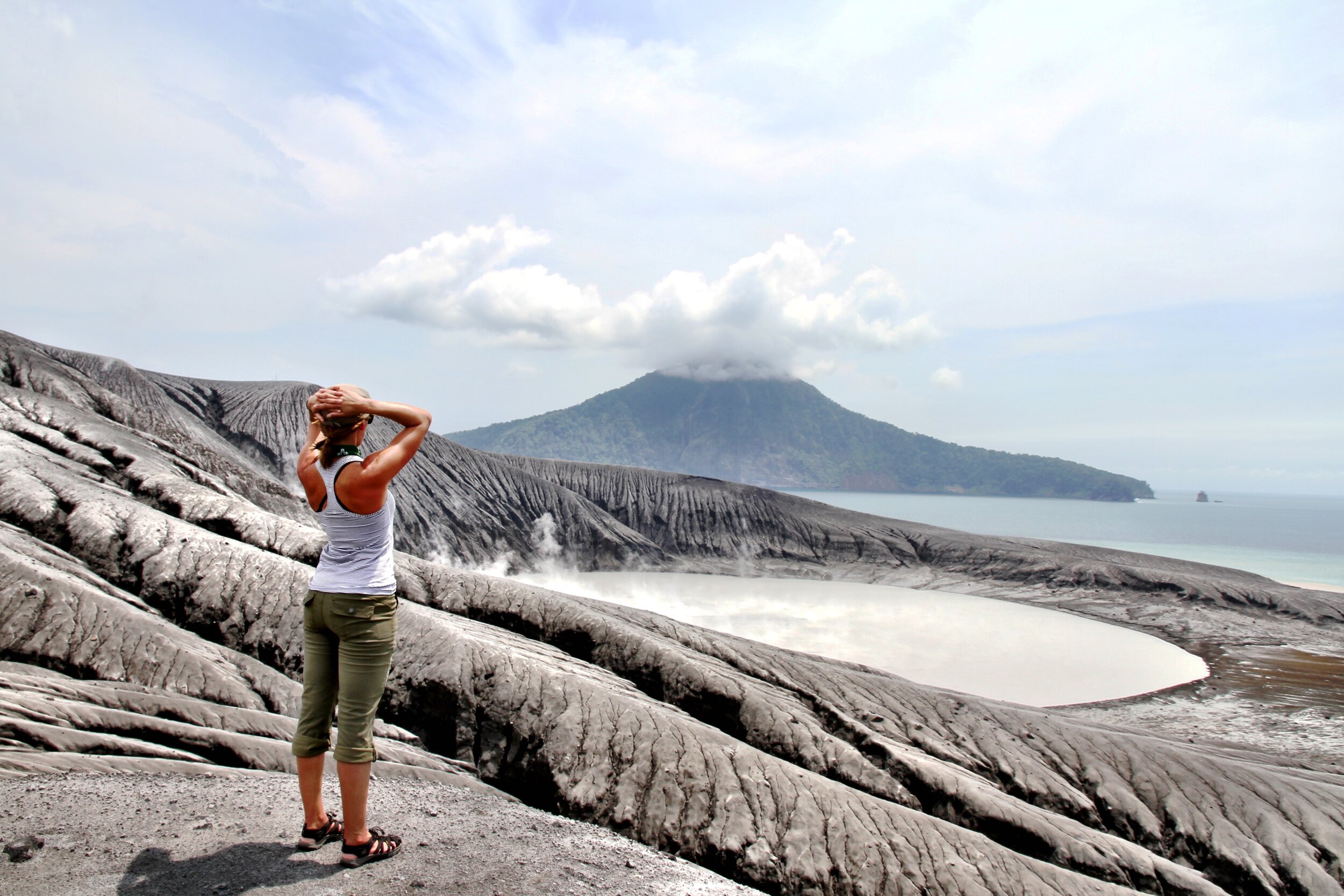A Klotok-work Orange

THE SCREW PINES HAVE TAKEN OVER. Left to their own devices they creep across the Sekoyner river, turning passages into dead ends. They move so quickly that a boat can get upriver but can’t get back down again. It’s like a floating hedge maze with a mischievous mind. A constant threat of rain looms heavy in the damp air and the lush vegetation droops with warmth.
Morning coffee on the Sekoyner.
A beautiful spread for lunch, all cooked below deck.
Two-story boats (or klotoks) similar to ours are in front and behind, but none stay in sight for too long. Our floating home has an open-air bedroom, sink, and dining room on the top deck, and a kitchen and bathroom below. Our affable guide, complete with wiry rat tail, chef, captain, and first mate only pop out sporadically with messages of food and wildlife sightings, or to secure a tarp around the deck to keep us dry. While there’s a bit of an upstairs-downstairs vibe going on, this has to be one of the most comfortable ways to explore this wild river world and get familiar with its famous red-headed inhabitants.
Orangutan dancing in the treetops above Fer’s head.
At nearly 1,200 square miles of lowland habitats and mangrove swamps, Indonesian Borneo’s Tanjung Puting National Park is a freaking dream for orangutan enthusiasts. Situated on one of only two islands that still hold one of man’s closest relatives, the park boasts not one, not two, but three jungle walks that all but guarantee a great ape encounter. Keen on counting my blessings I stopped my orangutan tally after reaching the high teens. Your guide won’t promise anything, but they’ll brag about how many animals their last guests saw, and their positivity tells you you’re in for a treat.
From golden brown to brackish and black, the Sekoyner River changes in color and content as we move upstream to Camp Leakey. Trees filled with nosey proboscis monkeys are replaced with thin-snouted crocodiles resting in eddies, and at one point a beautiful, curiously calm orangutan was so close to our boat that she nearly attempted to come aboard.
Entrance to Camp Leakey, where the natural brackish-black color of the water meets the golden brown.
BLACK water, no swimming - it’s filled with two different kinds of crocodiles.
Camp Leakey was established in the early 1970’s and named in honor of the infamous Louis Leakey. The spot is dedicated to the research and rehabilitation of orangutans. Part of the rehabilitation process is regular feedings, which is why your chances of seeing an orangutan are so high on this trip - most of these apes are semi-wild. They’re free to roam, but still partially dependent on man’s handouts for survival.
Mother and child with an ear of corn from the feeding platform.
There are more than 100,000 orangutans in Borneo (most in Indonesia), more than anywhere else in the world. Another superlative Indonesia carries is being the world’s largest producer of palm oil, which is great for bolstering rural income in a very poor country, but unfortunate for the orangutan, as their habitat is fragmented then razed to make way for row after row of oil palms, and their superabundant home is reduced to a dull monoculture.
VERDICT: Mostly Harmless – but never forget an adult orangutan is strong enough to literally rip your face off if it wants to.














